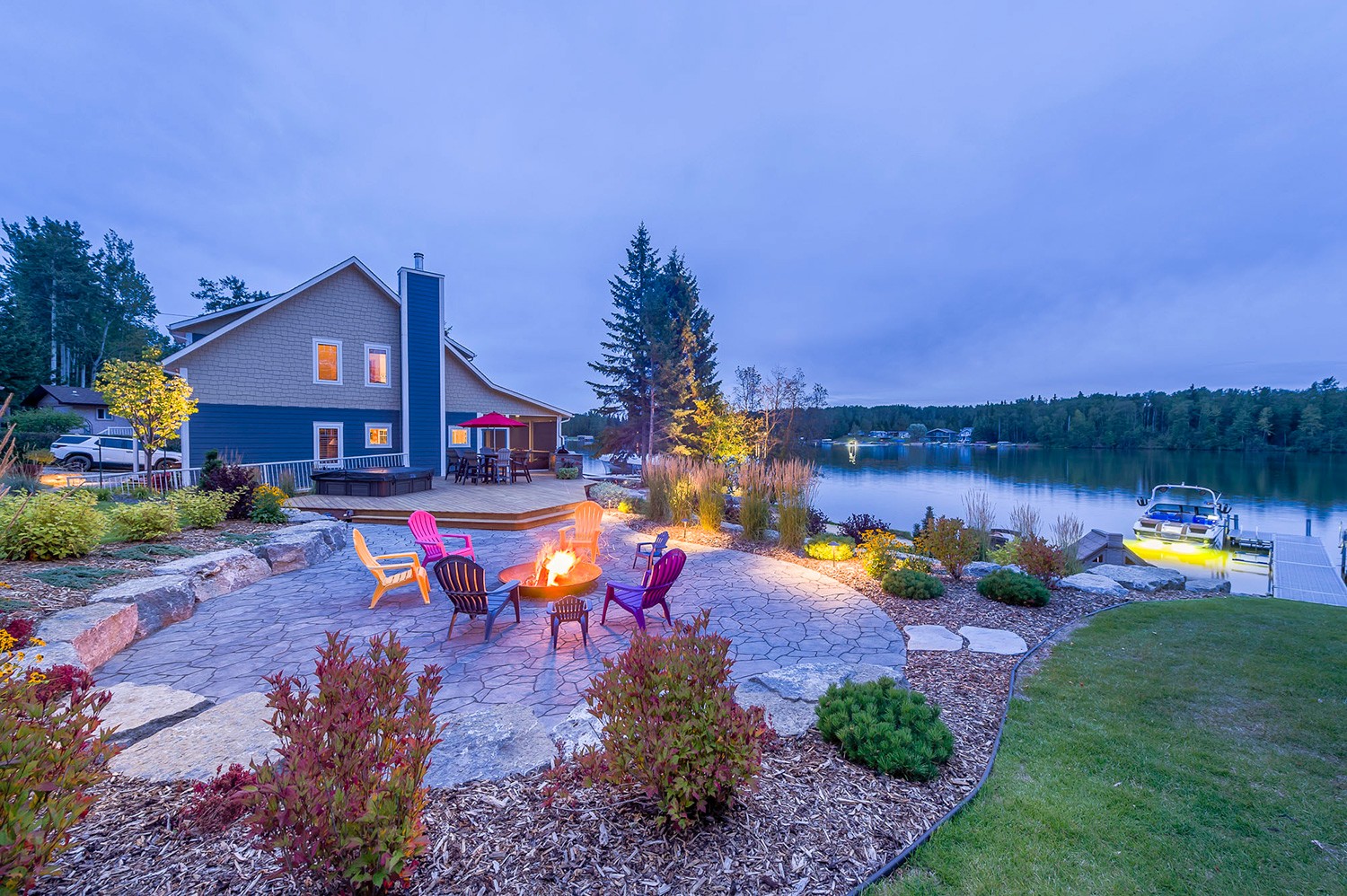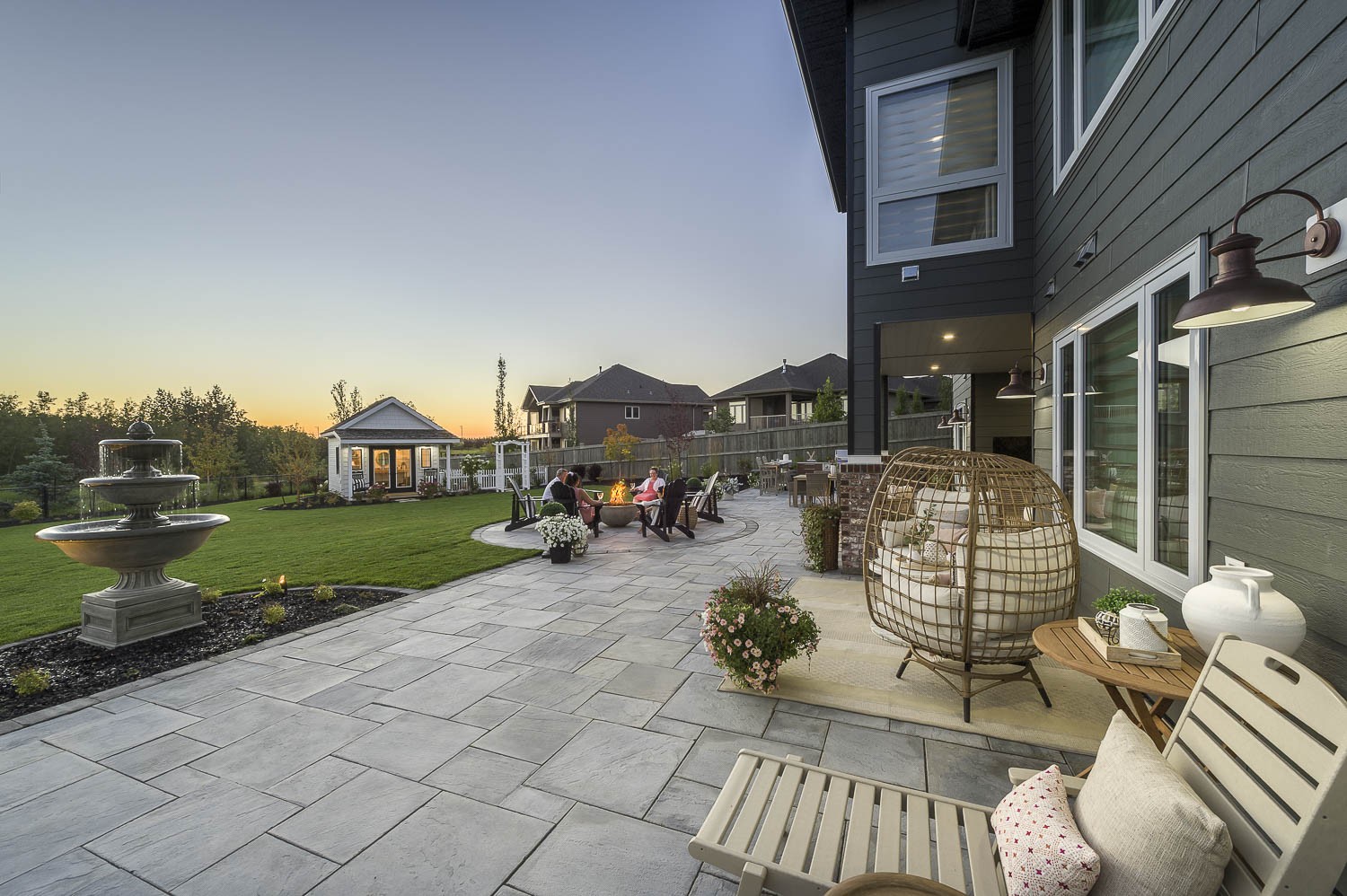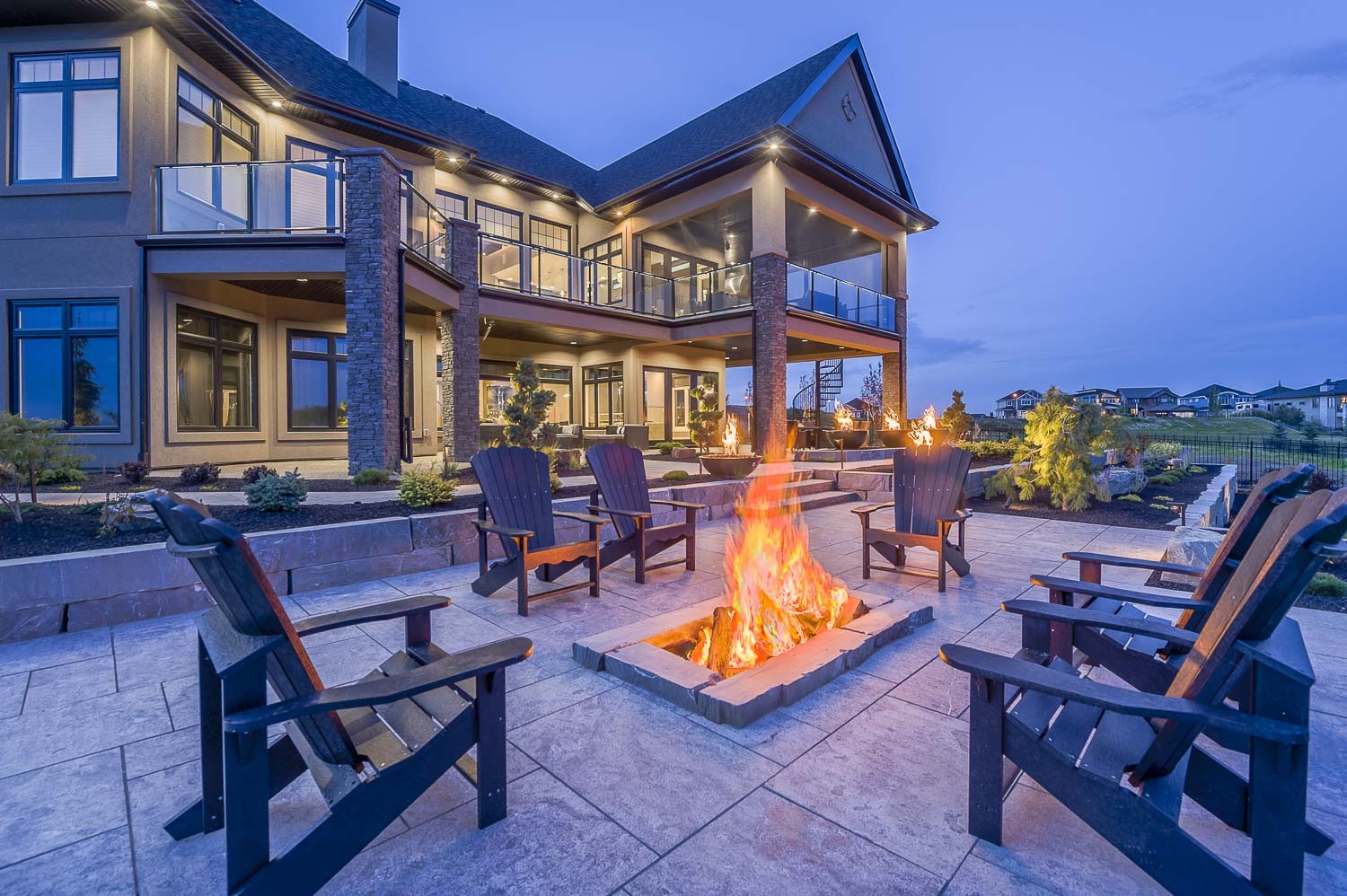Blog
How to Choose the Right Landscaping Features for Your Home

Your home's exterior is the first thing visitors see, so why not make a lasting impression with stunning landscaping features? From lush gardens to eye-catching hardscaping elements, choosing the right landscaping features can elevate your home's curb appeal and create a welcoming outdoor oasis. Select the perfect landscaping features that complement your home's architecture and reflect your personal style. Whether you're looking to enhance your front yard or backyard, we've got you covered with expert tips and inspiration for creating a beautiful and functional landscape design.
Landscaping Features and Their Benefits
Landscaping features are an essential aspect of any home's outdoor space. They not only enhance the aesthetic appeal of a property, but also provide numerous benefits for homeowners. In this section, we will discuss some common landscaping features and their advantages to help you make informed decisions when choosing the right ones for your home.
1. Trees and Shrubs:
Trees and shrubs are among the most popular landscaping features due to their versatility and functionality. They add greenery and texture to your yard while providing shade, privacy, and noise reduction. Trees also help in reducing air pollution by absorbing harmful gases and releasing oxygen into the atmosphere.
2. Flower Beds:
Flower beds are a great way to add color and beauty to your landscape design. They come in various shapes, sizes, and arrangements that can be tailored to suit your preferences. In addition to enhancing curb appeal, flower beds attract pollinators such as bees and butterflies which aid in plant reproduction.
3. Hardscaping:
Hardscaping refers to any non-living elements incorporated into a landscape design such as walkways, patios, decks, and retaining walls. These features not only add structure and definition to your outdoor space but also increase its functionality by creating designated areas for activities like dining or relaxation.
4. Water Features:
Water features like fountains, ponds, or waterfalls can bring a sense of tranquility to your backyard oasis. The sound of running water has a calming effect on the mind that can reduce stress levels and improve overall well-being.
5. Lighting:
Outdoor lighting is another important aspect of landscaping that often goes overlooked. Properly placed lights can highlight specific areas of interest in your yard while providing safety at night by illuminating walkways or stairs.
6. Hedges:
Hedges serve as natural fences that provide privacy from neighbors or busy streets without compromising on aesthetics. They also act as windbreakers during harsh weather conditions, protecting your home and garden from strong winds.
7. Edging:
Edging is often overlooked but plays an important role in maintaining a well-manicured lawn. It separates different parts of the landscape, such as flower beds and grass, while preventing soil erosion. Edging also adds definition to your yard and makes it easier to mow or trim the grass.
Landscaping features not only add visual appeal to your home's outdoor space but also offer numerous benefits such as privacy, functionality, and improved well-being. When choosing the right landscaping features for your home, consider your personal preferences, maintenance requirements, and budget to create a cohesive and functional outdoor living space that you can enjoy for years to come.

Tips on Selecting Features that Enhance Outdoor Living Spaces
When it comes to creating a beautiful outdoor living space, selecting the right features is important. These features not only enhance the aesthetic appeal of your home, but also add functionality and value. With so many options available, it can be overwhelming to decide which ones will work best for your specific needs and preferences. To help you make the right choices, here are some tips on selecting features that will enhance your outdoor living space:
Tip 1: Consider the purpose of your outdoor space
The first step is to think about how you want to use your outdoor space. Are you looking for a peaceful retreat where you can relax and unwind after a long day? Or do you envision a lively area for entertaining friends and family? Perhaps you want both – a balance of tranquility and entertainment. Determining the purpose of your outdoor space will set the foundation for all other decisions.
Next, consider the size and layout of your yard. Are there any existing natural elements, such as trees or hills, that could be incorporated into your design? How much open space do you have versus areas that are shaded or receive direct sunlight? These factors will play a role in determining what type of landscaping features will work best in your space.
Another important consideration is climate. If you live in an area with harsh winters, it's crucial to choose plants and materials that can withstand freezing temperatures. On the other hand, if you live in a warmer climate, drought-resistant plants may be more suitable. It's also important to take into account how much maintenance each feature will require based on your local climate.
Consider any specific activities or hobbies that may require specialized features in your outdoor space. For example, if gardening is a passion of yours, incorporating raised garden beds or an herb garden would be beneficial. If cooking outdoors is something you enjoy, adding a built-in grill or outdoor kitchen may be worth considering.
Tip 2: Assess your budget and prioritize features
Before you start planning out your dream landscape, it's essential to set a realistic budget. Take into account not only the cost of materials, but also labor, maintenance, and any additional fees such as permits or design consultations. It's important to be honest with yourself about what you can realistically afford so that you don't end up overspending.
It helps to make a list of the features that are a must-have for your landscape. These could include things like a patio or deck for outdoor entertaining, a water feature for relaxation, or specific plants or flowers that you've always wanted in your yard. These items should be at the top of your priority list because they are non-negotiable in creating the perfect space for you.
While certain elements may seem more affordable upfront, it's important to consider their long-term costs as well. For example, opting for real grass instead of artificial turf may save you money initially but will require ongoing maintenance costs such as mowing and watering. On the other hand, investing in high-quality materials that require less maintenance may save you money in the long run.
When considering different landscaping features, think about how they will enhance the functionality of your outdoor space. For instance, if you have kids or pets, investing in durable materials like concrete pavers instead of traditional grass can provide both aesthetic appeal and practicality. After evaluating all factors including cost, must-haves, long-term costs, and functionality, prioritize the features based on their importance to you.
Tip 3: Evaluate the layout and size of your outdoor area
One important aspect to keep in mind is the flow and accessibility within your outdoor area. A well-designed landscape should have a logical flow that allows for easy movement between different areas without any obstructions. Consider creating pathways or walkways that connect various points within your yard, making it easier to navigate and enjoy the space.
Another factor to consider is balance and proportion. A harmonious blend of plants, hardscapes, and other features is key in creating an aesthetically pleasing outdoor space. For instance, if you have a small backyard, avoid overwhelming it with large structures or excessive plantings that can make it feel cramped. On the other hand, if you have a spacious yard, incorporating larger elements can help create visual interest and balance out the open spaces.
In addition to the physical layout of your outdoor area, it's also essential to evaluate its exposure to sunlight and shade. Different types of plants thrive under varying levels of sunlight exposure; therefore understanding these conditions will help guide plant selection for optimal growth and health.
Think about the maintenance and upkeep of your outdoor area. While certain features may look appealing, they may require a lot of time and effort to maintain. Consider your lifestyle and how much time you are willing to dedicate to caring for your landscape before incorporating high-maintenance elements into your design.
Tip 4: Observe the climate and maintenance needs
Think about the climate of your region. Different plants and materials thrive in different climates, so it is essential to choose landscaping features that are suitable for your specific environment. For instance, if you live in a hot and dry climate, opt for drought-resistant plants that require less watering and can withstand high temperatures. On the other hand, if you live in a colder climate with harsh winters, select plants that can survive freezing temperatures.
In addition to plants, it is important to consider how other landscaping elements such as hardscapes (e.g. pathways, patios) and water features will hold up against the weather conditions in your area. Materials like concrete or stone may crack or shift in extreme temperature fluctuations while certain types of wood may rot quickly in wetter climates. Researching which materials are best suited for your specific climate will help prevent costly repairs or replacements down the line.
Another key aspect to keep in mind is maintenance needs. Some landscape designs may look beautiful initially but require constant upkeep which could become overwhelming over time. Consider how much time and effort you are willing to put into maintaining your landscaping features before making any decisions.
For low-maintenance options, consider using native plants that are adapted to thrive in their natural environment without excessive care or resources. Incorporating mulch or ground coverings such as gravel or bark chips can also reduce weed growth and retain moisture for plants while requiring minimal maintenance.
Tip 5: Incorporate personal style and preferences
Your outdoor space is an extension of your home and should reflect your unique taste and personality. Here are some tips for incorporating personal style into your landscape design:
1. Consider the architecture of your home: This will give you a better idea of what kind of landscaping features will complement the overall aesthetic of your property. For example, if you have a modern home with clean lines, you may want to opt for minimalist landscaping with a focus on geometric shapes and sleek materials.
2. Think about color palette: Take note of the colors used on the exterior of your home and try to incorporate them into your landscaping elements such as flowers, plants, and hardscape materials like stones or pavers. This will help tie everything together and create a harmonious look.
3. Consider maintenance level: If you're someone who enjoys spending time outdoors gardening and tending to plants, then go ahead and incorporate more high-maintenance elements like flower beds or vegetable gardens into your design. However, if you prefer low-maintenance landscapes, opt for hardy plants that require minimal upkeep.
4. Personalize with decorative accents: Whether it's a unique sculpture or handmade mosaic tiles embedded in pathways, these small touches can make a big impact on the overall look of your outdoor space.
5. Don't be afraid to mix styles: It's okay to mix different styles in order to create a truly personalized landscape design that reflects both yours and your partner's tastes. For example, if you prefer a more traditional look but your partner leans towards modern, try incorporating elements from both styles for a unique and balanced design.
When choosing landscaping features for your home, it's important to consider not only the practical aspects like functionality and maintenance but also your personal style and preferences. By infusing your own personality into the design, you can create an outdoor space that truly feels like an extension of your home.
Tip 6: Seek professional advice and inspiration
The main advantage of consulting with a professional is their knowledge and experience in the field. They are well-versed in various types of plants, materials, and design techniques that will work best for your specific location and climate. This expertise can save you time, money, and potential headaches down the road by avoiding costly mistakes or choosing features that may not thrive in your environment.
Moreover, professionals have an eye for detail and can provide valuable insights on how to enhance the overall aesthetic appeal of your yard. They can recommend creative ways to incorporate different textures, colors, and shapes into the landscape design to create a cohesive and visually appealing look. Additionally, they can also suggest practical solutions such as creating designated seating areas or incorporating functional elements like fire pits or water features.
Another benefit of seeking professional advice is access to their network of suppliers and resources. Landscapers often have established relationships with local nurseries or home improvement stores which allows them access to high-quality materials at discounted prices. This not only saves you money but also ensures that you are getting the best quality products for your landscaping project.
In addition to seeking professional advice, it's also important to gather inspiration from various sources before making any final decisions about your landscaping features. This could include browsing through magazines or online platforms such as Pinterest or Instagram for ideas on designs, layouts, color schemes, and more. You could also take a walk around your neighborhood or visit public gardens to see what catches your eye and fits within your personal style.
In conclusion, the right landscaping features can greatly enhance both the aesthetics and functionality of your home's outdoor space. By thoughtfully selecting plants, hardscaping elements, and implementing sustainable practices, you can create a beautiful and welcoming landscape that complements your home's architecture and reflects your personal style. Remember to stay consistent with maintenance tasks to ensure that your landscape continues to flourish and provide enjoyment for years to come.


